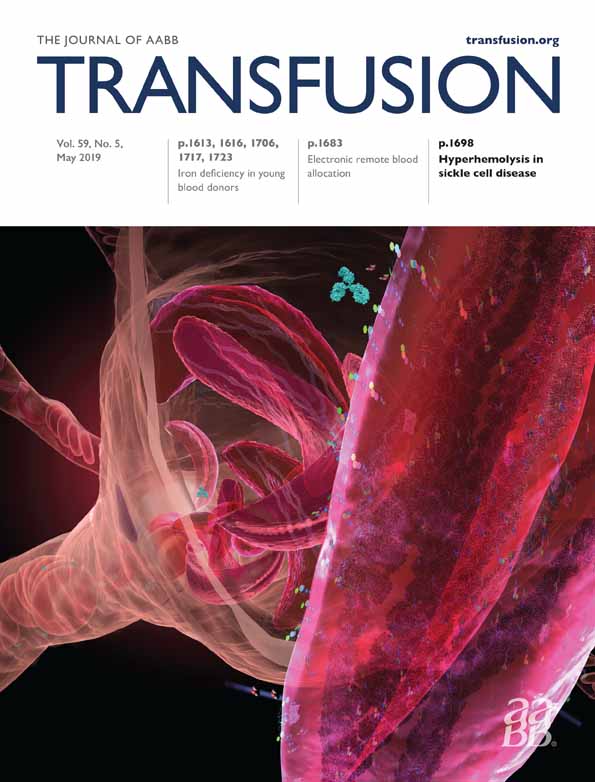Microbial pathogen primary sequence inversely correlates with blood group antigen immunogenicity
Abstract
BACKGROUND
It is well known that specific groups of patients immunologically respond more readily than others to red blood cell (RBC) antigens. While allogeneic RBC antigen exposure is the primary determinant of alloantibody formation, other variables are also involved. Given the significant primary sequence identity between common RBC and microbial antigens, we hypothesized that certain individuals may be immunologically primed to form RBC alloantibodies via environmental exposure to cross-reactive microbial epitopes, and that such a correlation may be linked to blood group antigen immunogenicity.
STUDY DESIGN AND METHODS
We examined the relationship between RBC-microbe peptide homology and the formation of alloantibodies to the most immunogenic RBC antigens, using the BLASTp homology database. Thirteen-residue peptides centered on the polymorphic amino acids of K, Jka, Lua, E, c, M, C, and S antigens were queried for identity with microbial peptides using the BLASTp database. Results were restricted to bacteria and fungi, with a selective threshold of >80% identity for inclusion, to allow for minor peptide variability.
RESULTS
Significant peptide identity was found between RBC antigens and pathogenic organisms including B. fragilis, P. aeruginosa, and Candida spp., among others. Linear regression and k-medoids clustering analysis of the microbial genera meeting the inclusion criteria showed a statistically significant inverse correlation with RBC immunogenicity (b = −0.0017, r2 = 0.624 & p = 0.0197), with lower immunogenicity antigens associated with larger number of genera.
CONCLUSIONS
Our findings raise a potential relationship between microbial exposure and alloantibody formation, and lead to interesting questions regarding the potential relationship between RBC antigen immunogenicity and microbial prevalence.
CONFLICT OF INTEREST
The authors have disclosed no conflicts of interest.




